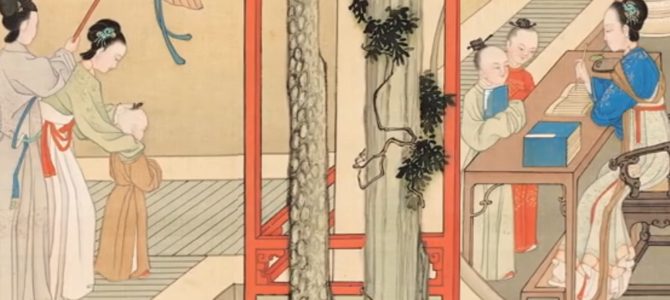
The Smithsonian’s current exhibition, “Empresses of China’s Forbidden City, 1644–1912,” brings together a wealth of fine and decorative art, costume, and personal objects belonging to the empresses of the Qing Dynasty, the last imperial rulers of China. Most of these items have never left China before, so unless you’re planning to visit Beijing someday this is an extremely rare opportunity to see some truly remarkable survivors of a vanished culture.
Even if, like me, you’re not very knowledgeable about Chinese art, you’ll find this is an astonishing show—rich in beauty and history, extremely well-curated, and leaving the visitor wanting to learn more. In short, “Empresses” does precisely what a truly great art exhibition ought to do, yet rarely manages to achieve.
The Qing Dynasty, which overthrew the preceding Ming Dynasty in the mid-17th century to become the new rulers of China, lasted until the abdication of the Emperor Puyi in 1912. His story may be familiar to you, if you’ve seen director Bernardo Bertolucci’s Best Picture Oscar-winning film “The Last Emperor” (1987). It’s hard not to think back on the movie when you arrive at the entrance to the galleries containing the show, and remember how in the film, the child Puyi was brought through the many halls of the Forbidden City to meet the dying Empress Dowager Cixi and be named her heir.

The exhibition designers have constructed a Chinese gateway at the entrance to the show, framing an enormous carved screen that sat behind the empress dowager’s throne. A life-sized portrait of the larger-than-life Cixi hangs nearby, and with her intense gaze one can immediately understand why she was such a formidable force in China and international politics for so many decades.
She may have started out in her youth as one of many court concubines, but after the death of the Xianfeng emperor over the next 40-odd years she went on to establish China’s first rail networks, forge greater trade connections with the West, and make attempts at real social and political reform, not always successfully.
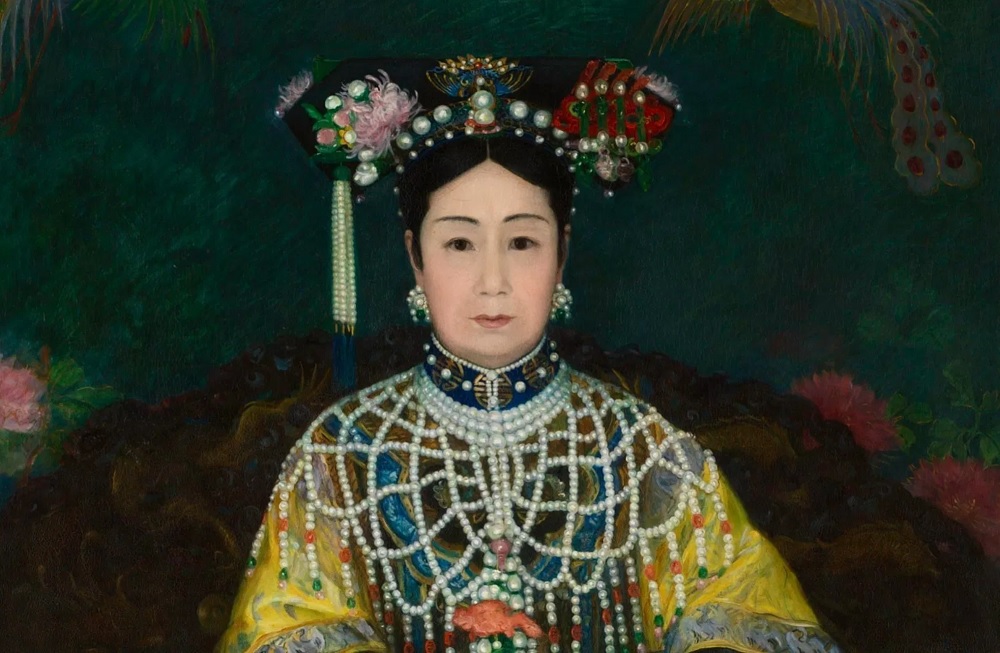
Making one’s way from the audience chamber-like first gallery into the next rooms of the exhibition, one is introduced to Chinese imperial splendor slowly and deliberately. There are golden treasures, such as a magnificently gilded processional censor, and the dragon-topped seal of the last empress, as well as formal imperial robes, watercolors illustrating scenes from courtly life, and a fur-trimmed court hat featuring pearls and stacked phoenixes.
On the whole, the first impressions are of hauteur and remoteness, even when broken up by some of the very sentimental calligraphic poems on display, thanks in part to the formal portraiture of these empresses.
There’s a surprising connection to Old Master painting among these images, which I would never have known but for this exhibition. The artist known to the Chinese as Lang Shining was born Giuseppe Castiglione (1688-1766), a Jesuit missionary from a well-to-do family in Milan, who made his way to Beijing and never left.
Having been trained by a professional artist in Italy, he soon became a highly favored imperial court painter and architect, blending elements of Italian Baroque design with traditional Chinese art. He was not the first nor the last Jesuit to serve the Chinese imperial family in this capacity, but his work is exceptional.
The exhibition’s grand portrait of the Empress Dowager Xiaozhuang holding her prayer beads, a work attributed in part to Castiglione, was painted around 1750. However with its flattened surfaces, unusual perspective, and repeating geometric patterns, one could quite easily mistake it for being a work of the Viennese Secessionist movement 150 years later.
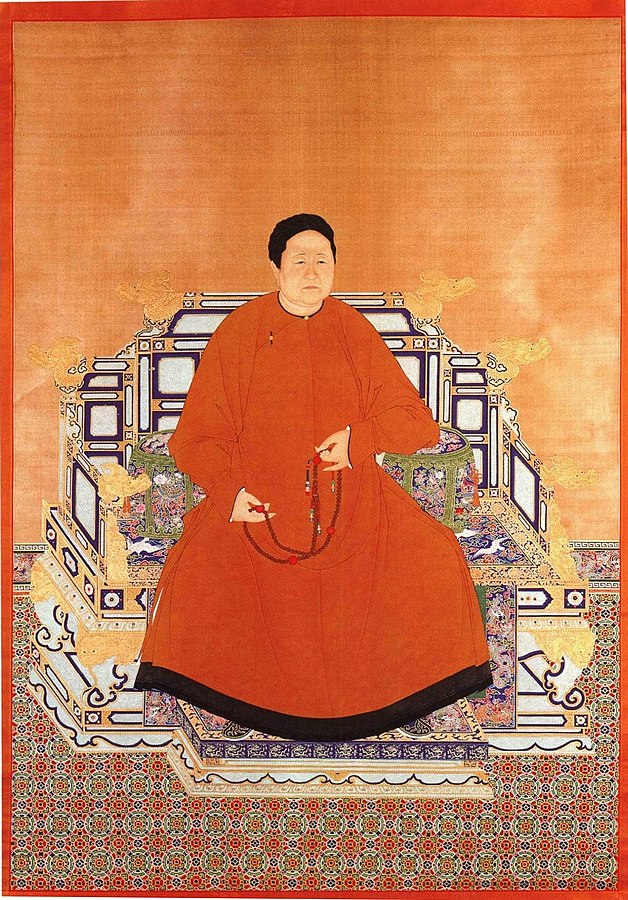
Somewhat more traditional in appearance but no less dynamic is Castiglione’s magnificent painting of the Qianlong emperor riding his horse at a flying gallop accompanied by an attendant. The pair are off in pursuit of deer, and despite the incredible speed at which they are traveling, the emperor has just fired off an arrow, and is reaching backwards to grab another, even as he keeps his eyes on his quarry.
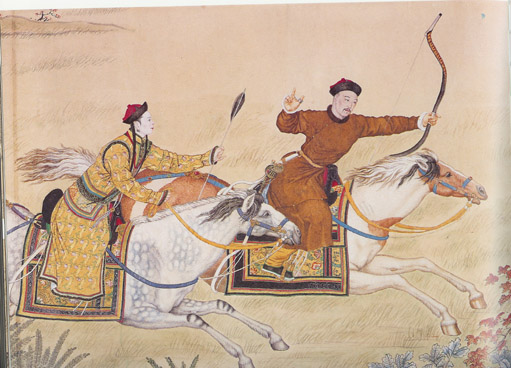
Proceeding through the exhibition, the relative minimalism of the upper floor is abandoned in favor of excess on the lower, while imperial yellow walls give way to ones painted a rich peacock blue. Display cabinets that held perhaps one or two objects in the first part of the show are superseded by cabinets containing multiples of beautiful things: porcelain vases, jade cups, lacquered teaware, bronze mirrors, sumptuous gowns, impossibly ornate shoes, etc. If the first part of the exhibition gives us a sense of what a diplomatic visitor might have seen when paying a visit to the imperial court, the second part gives us an idea of the court’s hidden, interior life.
One object that made a particular impression on me in this more personalized area of the show is a large, circa 1770 panel that covers an entire wall in one of the galleries. It depicts a beautiful young woman, smilingly half-hidden behind a screen, and a charming little boy engaging the viewer with a wave of his hand and an expression of childlike wonder on his face. This is the future Jiaqing emperor, accompanied by his mother the Empress Xiaoyichun, and for me the chance to see and experience this family portrait is reason enough to attend this exhibition.
In the picture, the artist created something that, if I even dare to make the comparison, must be the Qing Dynasty equivalent of “Las Meninas.” Not only is the picture a tour-de-force of trompe l’oeil painting, making it seem as if we could step into this part of the palace ourselves, but it’s almost unbelievably informal after all of the very stiff, face-on imperial portraits that we’ve seen up until this point in the exhibition. This was clearly not a piece meant to be shown to the hoi polloi, but an intimate, family moment, marking a time of innocence, beauty, and prosperity.
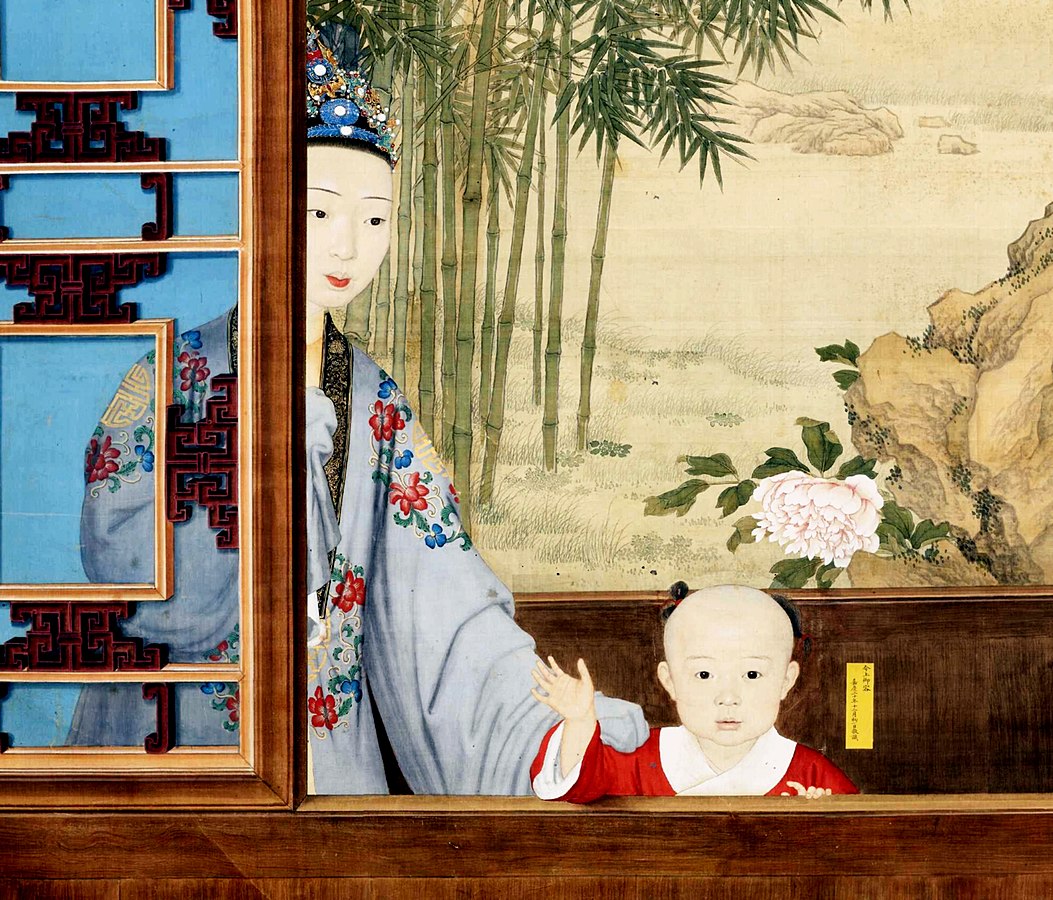
As such, it heralds a series of paintings in the exhibition depicting the empresses engaged in more relaxed activities. One shows an older imperial couple playing a board game together, smiling out at us as if one has just won, and we’re being asked to laugh along.
Another shows the Empress Ci’An in her everyday blue dress, relaxing in a garden pavilion. She has put down her simple, woven bamboo fan on the table, and seems to be listening to what we have to say, or perhaps inviting us to come in out of the heat and join her for a chat. Other intimate pictures show imperial ladies at their toilette, or taking a stroll through the gardens with their children, or engaged in moments of private reading and meditation.
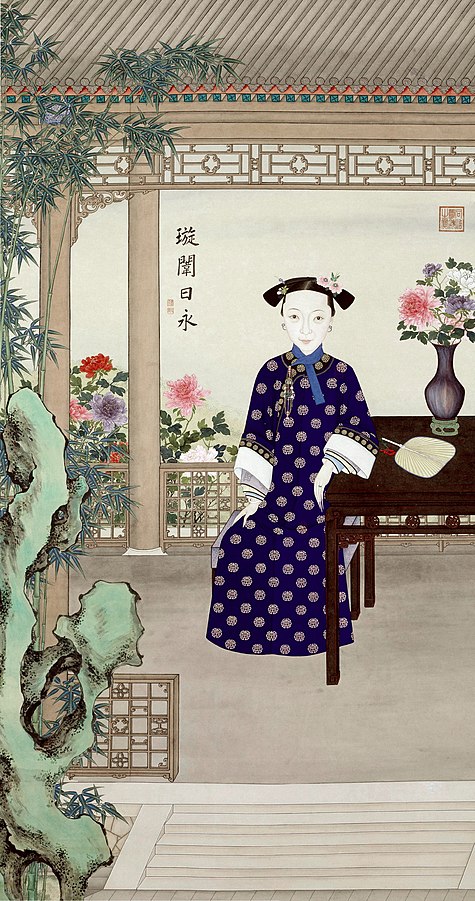
For all the imperial splendor of things like overly embroidered boots or elaborately enameled jars shaped like ducks, I think the real joy of this exhibition doesn’t lie with the gold and jewels, the precious materials and costly accessories that these women used, beautiful as these things unquestionably are. To me, the more intimate paintings depicting everyday life within the imperial palace are the true revelation, or at least, to those like me who know very little about the Chinese imperial system.
Perhaps the greatest strength of this show is in the careful effort to display the balance between public and private. As splendid as the public aspect of their lives may have been, here we are given an opportunity to see women who, for a moment anyway, allow us to enter a private, intriguing world, which while it existed was closed to all but a select few. That is not an opportunity to miss.
“Empresses of China’s Forbidden City, 1644–1912” is at the Smithsonian’s Freer/Sackler Gallery in Washington, D.C., through June 23, 2019.









